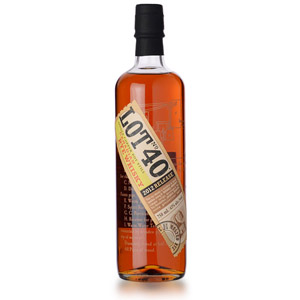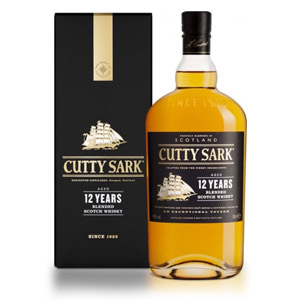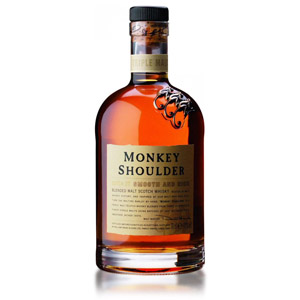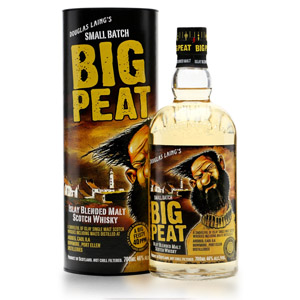What better way to start out the new decade than tasting something that has sat in the back of my whisky cabinet an embarrassing 5 years? I have a habit of doing this, on the blog; I hoard bottles and samples and then take way too long to get around to reviewing them. I would be ashamed if I had any kind of journalistic integrity or even any sense of responsibility to my readers. Thankfully, I have neither so here we go.
Forty Creek’s Confederation Oak Reserve was making noise in whisky circles a half-decade ago. “The rebirth of Canadian whisky” and similar phrases were bandied about. I regret now that I didn’t taste it at the time, because maybe the heady air of mass shared public delusion might have improved the experience. Also, before you start digging out your Dixie flags, note that the “Confederation” in the title refers to the Confederation of Canada in 1867. Forty Creek ages their copper pot-still components (rye, corn, and barley) in separate barrels and then carefully blends them together for the final product, an unusual approach. In this case after blending, the whiskies are married – meaning aged – “up to 2 years” (a phrase I heartily dislike because one day qualifies as “up to 2 years”) in new Canadian oak barrels. The oak trees used are harvested from forests near the distillery in Grimsby, Ontario, and are estimated to be around 150 years old. That would make them – drumroll, high-hat – about as old as Canada’s Confederacy. Ta-da! Confederation Oak.
The resulting whisky is bottled without an age statement at the legal minimum of 40% ABV. I’m happy to see that newer bottle labels took care of one of my gripes about the original bottle design for Confederation Oak: The giant number “40” on the front, which naive consumers could be forgiven for reading as “40 years”. For an example, see the bottle image above. A 40 year-old whisky for $55 would be something, indeed. Newer labels omit the “40”.
Confederation Oak Reserve does still appear on store shelves, so this review isn’t totally useless, although there’s no telling what might have changed – aside from the label – in the 5 years since my bottle was filled. I had reasonably nice things to say about the entry-level Barrel Select, although that one is intended to compete with $20 Canadian blends on the bottom shelf.
I picked up my 750ml bottle back in 2015 for a whopping $55 a bottle – quite a stretch for a Canadian mass-market release – and if for some reason it matters my bottle is #04325 from Lot 1867-D.
Nose: Distinctly Canadian whisky. Sweet – a ton of brown sugar, honey, and molasses accompanied by a twang of medicinal grain alcohol, a cross between middling vodka and rubbing alcohol. After a rest in the glass some of the ‘rubbing alcohol’ has dissipated, revealing sweet baked goods (“snickerdoodle” cookies) vanilla buttercream frosting, and sweet corn.
Palate: Soft, silky body. Very low tongue burn (apropos for 40%), with those same sweet baked goods up-front on the palate. These are accompanied by mild black licorice (anise), corn pudding, butterscotch frosting, mildly bitter oak, and faint dusty charcoal.
Finish: Medium length. The mild oak becomes mildly tannic – mouth drying – and the bitterness continues but is still balanced by the remaining sweet notes (brown sugar, mostly). Fades without evolving.
With Water: A few drops of water increase the nose tickle without improving the complexity. The palate feels thinner – indeed watery – although the finish is a little sweeter. Skip the water.
Overall: I’m not quite sure what all the fuss was about five years ago. This is categorically Canadian whisky, by its soft mouth feel and dominant sweet notes, but it suffers the same downsides that less-expensive Canadian blends suffer: excessive ‘rubbing alcohol’ aromas, flat one-dimensional palate notes, and a vaguely bitter finish. I liked Crown Royal Northern Harvest Rye about 100 times more than this (and it’s half the price) and although as an all-rye product instead of a blend it’s not a fair comparison, I liked Lot 40 100% rye more than both of those.
If you like your whiskies sweet and uncomplicated, get the Crown Royal above. If you like to pay double for the same experience, then this Forty Creek was MADE for you. Or, I suppose, if you feel you must taste a whisky partially aged in 150 year-old Canadian oak there’s no better chance. In that case, though, look for a glass of it at a bar rather than dropping $55 – $70 on a bottle.









I’ve got mixed feelings about Forty Creek. I’ve had excellent and disappointing bottles of most of their core range. I’ve had some terrific samples of Confederation Oak this year. Those samples had wonderful nuttiness (walnuts) and dark fruit notes (dates, plums).
However, I agree that the culprit in the disappointing bottles of FC is exactly what you’ve identified: an off, bitter, vodka-esque flavour. Quality control seems less consistent since founder John K Hall sold the brand and stepped away from day to day operations.
About “aging the components (rye, corn, and barley) in separate barrels and then blending them together for the final product”, it’s actually the most commonly used method in Canadian whisky.
Thanks for the note!
The lots do indeed matter, and with Lot D, based upon what I have read from different reviewers/sources, the later Lots (D, E, maybe F) are the worst offerings of this whisky. Lots A and B are reviewed much more favourably from multiple sources. I found a bottle of Lot A a few years ago and have been sparing it along. I consider it to be an excellent whisky, and not just within the Canadian whisky category.
I received a bottle of this for Christmas. Such a pleasant experience sipping this, I’ll be sad when it’s all gone. I don’t get the rubbing alcohol note at all. Super mellow.